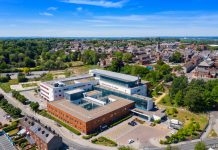There’s been a lot written about the slow-down in the marketing of new drugs in the last 20 years from the point of view of the international pharmaceutical industry establishment. But if you asked an Indian physician what is needed to discover a new drug he or she might say, “Very little, actually. We’ve had plenty of good drugs from Mother Nature in our traditional Ayurvedic medicine”. The slow-down is a fact and various reasons have been noted as contributors including an increasingly challenging regulatory environment, a lack of good druggable targets (all the easy ones having been done), increasingly challenging disease states associated with ageing populations, a lack of good quality new chemical entities, and so on. Overall an intrinsically risky business has become riskier. It’s entirely appropriate and understandable, therefore, that companies should take serious steps to mitigate the risks and thereby increase profitability. It’s also very clear that companies have to make choices about what to develop from the many opportunities arising from their own research.
My perception looking at several major pharma companies from the outside is that their response has been to put in place a system for drug discovery to which projects in that company must comply ticking the necessary boxes as they go. Usually, this implies having a well-characterised pharmacological target (a receptor or enzyme) with an appropriate assay and then a sequential series of downstream assays in whole cells, serum, or blood before experiments are undertaken in animal models. That’s a lot of work before you get to a proof of concept experiment in an animal model to show that your potential drug has a chance of working in the disease state for which it is intended. All of this is understandable in the industrial context but, if I am being critical, systems and drug discovery paradigms have industrialised thinking and thereby circumscribed creativity.
In this situation, academic scientists can help in the early stages of drug discovery without compromising the rigour needed in a drug development programme and before the big financial commitments have to be made. The pharmaceutical industry itself has made it clear for many years that despite its size it cannot do everything worth doing or interesting. It boils down simply to the academic sector fulfilling one of its prime roles, namely to create opportunity. This is where the title of this piece, Drug Discovery Backwards comes in; you can find something that works and then establish the underlying science. My Indian friends, with their vast resource of traditional medicine, would call it Reverse Pharmacology. My point is that if you have discovered a group of compounds that really work from whatever source, they should be taken seriously as opportunities for new drugs. You won’t be following a predefined industrial system but will be led by the scientific questions and results, and in the Indian situation, by thousands of years of experience.
This more open approach suits the academic environment and, of course, my own interests in heterocyclic chemistry which provide many of the compounds. A particular recent success of our concerns immunomodulatory compounds that have efficacy in animal models of asthma, rheumatoid arthritis, lupus, and inflammatory bowel disease. You can read more about it in my e-book ‘Chemistry, the Queen of Sciences’ published by AG. However, it is proving difficult to find an industrial partner to take this work forward because, being a Drug Discovery Backwards project, it does not yet have all of the system components in place, in order. For our projects and, I believe, for many other opportunities, we need better ways to match opportunity with development and route to market.
Prof Colin J Suckling OBE DSc FRSE
Research Professor of Chemistry
Department of Pure & Applied Chemistry
University of Strathclyde
Tel: 0141 548 2271










